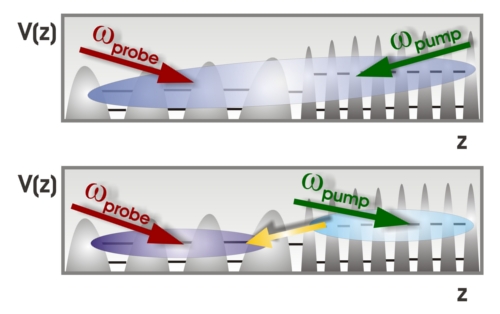
Project B6: Theory of transfer processes and optical spectra of molecule, inorganic semiconductor metal nanoparticle hybrid systems
Concentration on larger structures where an ab initio description is not possible:
|
 Tight-binding model of an inorganic/organic interface. Shown is the electronic potential energy landscape versus spatial coordinate z (perpendicular to the interface). The single molecules (left part) are represented by a potential well with two states and the semiconductor (right part) is formed by potential wells referring to the various atoms. Upper panel: formation of a hybrid exciton (blue sphere), lower panel: a Wannier-Mott exciton (right sphere) is transferred into a Frenkel exciton (left sphere). A possible pump-probe experiment with pump-pulse frequency and probe-pulse frequency is also indicated. |
